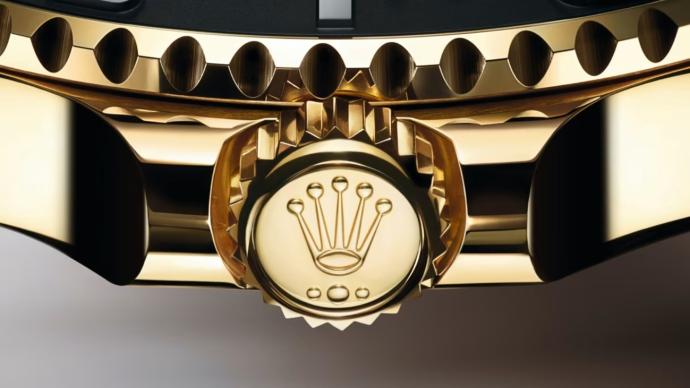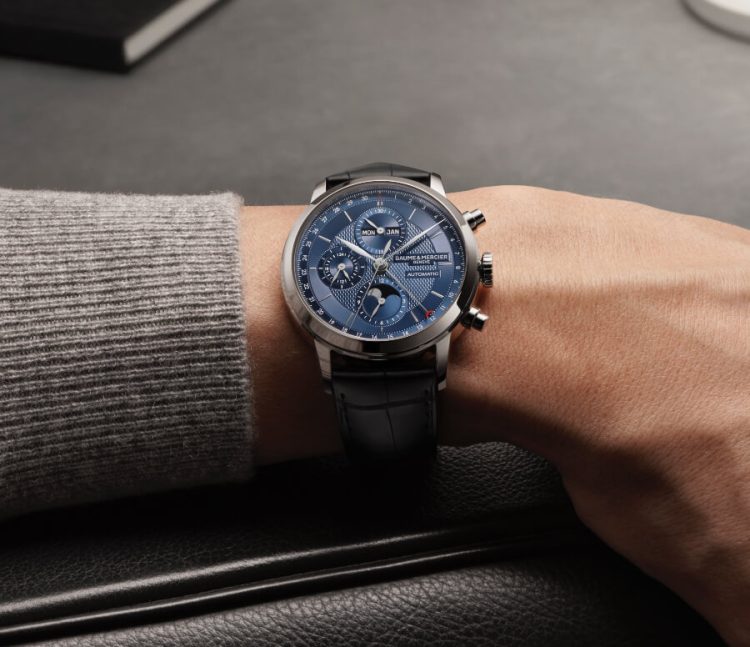Introduction
The world of luxury watches is a fascinating one, where precision, craftsmanship, and design converge to create timepieces that transcend mere function. Among the leading names in Swiss watchmaking, Rolex and Baume & Mercier are two brands that not only represent the pinnacle of horological achievement but also play significant roles in shaping global culture and influencing the way we view luxury, tradition, and innovation in the world of fine watches.
While Rolex stands as an undeniable icon of prestige, luxury, and technological innovation, Baume & Mercier represents a harmonious blend of timeless elegance, Swiss tradition, and affordable luxury. Though these two brands have carved out very distinct identities, they both contribute to the larger cultural dialogue around watches, influencing everything from fashion trends and celebrity endorsements to collecting culture and watchmaking philosophy.
In this article, we will explore the culture and influence of Rolex and Baume & Mercier watches, delving into their rich histories, their impact on the luxury market, and how they have shaped horological culture and the broader public’s perception of luxury timepieces. By examining their cultural contributions, historical significance, and ongoing influence, we will uncover what makes these two brands so compelling, powerful, and enduring in the world of high-end watches.
Chapter 1: The Cultural Significance of Rolex Watches
1.1 Rolex as a Symbol of Prestige and Status
Rolex watches have long been synonymous with luxury, success, and achievement. Since the company’s founding in 1905 by Hans Wilsdorf and Alfred Davis, Rolex has created more than just watches; it has created an iconic brand that embodies a way of life. Owning a Rolex is often seen as a status symbol, signaling to the world that the wearer has achieved a certain level of success, whether in their career, personal life, or social standing.
- Cultural Perception: Across different cultures and societies, Rolex represents the height of aspiration. In many circles, Rolex is regarded not just as a timepiece, but as an investment in prestige. The brand’s marketing and advertising campaigns have long reinforced this image. Through strategic partnerships with high-profile individuals, athletes, and events, Rolex has managed to position itself as the gold standard for luxury watches.
- Celebrity Endorsements: One of the most powerful cultural forces behind Rolex’s influence is its long-standing relationship with celebrities and athletes. From Paul Newman and James Bond to Roger Federer and Tiger Woods, Rolex watches are worn by some of the most recognizable figures in the world. These associations not only enhance the brand’s image but also contribute to its cultural relevance across various fields.
- Rolex in Pop Culture: Rolex has transcended the realm of luxury watches to become a part of global pop culture. References to Rolex watches appear in movies, television shows, music, and literature, further cementing its place in the public consciousness. The Rolex Submariner, in particular, is a key character in films such as “James Bond”, where it has become almost synonymous with the suave, sophisticated character of 007.
1.2 Rolex and Adventure: A Brand Linked to Exploration
Rolex has made significant strides in positioning itself as a brand for explorers and adventurers, with a legacy of pioneering watches designed for extreme conditions. The brand’s association with exploration, especially mountain climbing, deep-sea diving, and aviation, has played a huge role in defining its cultural significance.
- Rolex and Deep-Sea Diving: The Rolex Submariner has become the quintessential diving watch, revered for its robustness and water resistance. The brand’s early involvement in underwater exploration, particularly with Rolex Oyster Perpetual watches reaching unprecedented depths, helped cement Rolex’s place in the minds of those who pursue extreme sports and activities.
- Rolex and the Quest for the Summit: Rolex’s involvement with legendary explorers such as Sir Edmund Hillary and Tenzing Norgay—who wore Rolex watches during their historic ascent of Mount Everest in 1953—adds another layer to the brand’s association with achievement and adventure. The Rolex Explorer model, introduced in 1953, is a direct homage to these incredible feats of human endurance.
- Rolex and Aviation: Rolex also played a crucial role in the development of aviation and exploration with watches designed for pilots. The Rolex GMT-Master was created in 1955 in collaboration with Pan American World Airways to assist pilots in tracking multiple time zones. Today, the GMT-Master is not just a functional timepiece but a cultural icon in the aviation world.
1.3 The Cultural Impact of Rolex Watches in Collecting
One of the most significant ways Rolex has influenced culture is through the collecting community. Rolex has created a legacy of timeless designs and highly sought-after models, and this has made the brand a mainstay in watch collecting.
- The Investment Factor: Rolex watches are often seen not only as luxury items but as investments. Models like the Rolex Daytona, Submariner, and Day-Date have seen significant appreciation in value over time. The perception that Rolex watches can hold or even increase in value has led to an increase in collector interest and speculation in the secondary market.
- The Culture of Rolex Auctions: Rolex watches have become a staple at high-end auctions, with rare, vintage models fetching record-breaking prices. Watches like the Paul Newman Daytona or the James Bond Submariner have become objects of desire for collectors, and the auction world has become one of the key arenas in which Rolex’s cultural influence is most pronounced.
- Rolex and Watch Forums: The internet has amplified Rolex’s cultural reach, especially through dedicated watch forums and social media communities. Platforms like Instagram, Reddit, and specialized watch websites have created an ecosystem where Rolex enthusiasts and collectors can share knowledge, experiences, and appreciation for the brand.

Chapter 2: Baume & Mercier – The Influence of Elegance and Tradition
2.1 Baume & Mercier’s Cultural Identity
Baume & Mercier, founded in 1830 by Louis-Victor Baume and César de Mercier, has built a reputation for crafting watches that combine timeless elegance with Swiss precision. Unlike Rolex, which is often associated with overt luxury and status, Baume & Mercier has cultivated an image of understated sophistication and refined taste.
- The Cultural Appeal of Elegance: Baume & Mercier watches are characterized by their elegant design and classic style. The brand’s focus is on creating timepieces that exude refinement without the need for excessive flash or ostentation. For many, Baume & Mercier represents a more discreet form of luxury, one that celebrates subtlety and quality over overt display.
- Baume & Mercier in Fashion: The brand’s designs are often seen as a bridge between traditional watchmaking and modern fashion. Its collaborations with fashion houses and its consistent presence in the world of haute horlogerie make Baume & Mercier a sought-after name for those who want an elegant, reliable timepiece without the extreme price tag associated with other luxury brands.
2.2 Baume & Mercier’s Contribution to Swiss Watchmaking Heritage
While Rolex is known for its technological innovations, Baume & Mercier has focused on maintaining the traditional values of Swiss watchmaking. The brand’s commitment to quality craftsmanship and precision has ensured its place in the broader cultural narrative of Swiss horology.
- Classic Collections: Baume & Mercier’s most well-known collections, such as the Clifton, Riviera, and Hampton, have a classic, timeless appeal. These watches are not designed for novelty but for longevity, ensuring that they remain relevant and stylish for many years.
- Respect for Craftsmanship: Baume & Mercier emphasizes craftsmanship and technical mastery. By focusing on creating watches with exceptional movements and finishes, the brand maintains a cultural connection to the history of Swiss watchmaking and its deep-rooted traditions.
2.3 Baume & Mercier’s Cultural Influence in Art and Cinema
Baume & Mercier watches have not only been associated with the world of luxury but have also made notable appearances in art and cinema, further enhancing their cultural influence.
- Baume & Mercier in Cinema: Baume & Mercier’s watches have appeared in a number of notable films over the years. The brand’s presence in popular cinema and television has contributed to its cultural reach and connection with modern luxury. Actors, directors, and other filmmakers have embraced the brand for its elegant designs and timeless appeal.
- Artistic Collaborations: Baume & Mercier has been involved in collaborations with various forms of art and design, further cementing its place in the world of culture and creativity. For example, the brand’s collaboration with the Gustave Roussy Foundation has helped raise awareness for important social causes, reinforcing the brand’s image as a company that values art, culture, and philanthropy.
Chapter 3: Rolex vs. Baume & Mercier – A Cultural Comparison
3.1 Rolex: The Cultural Icon of Status and Achievement
Rolex has become synonymous with success, wealth, and status, thanks to its celebrity endorsements, high-profile events, and global visibility. Its watches are symbols of luxury, precision, and adventure—qualities that resonate deeply with those who seek to make a statement. Rolex’s powerful brand identity is tied to notions of exclusivity, and its cultural influence extends far beyond the world of horology.
3.2 Baume & Mercier: The Cultural Symbol of Elegance and Subtle Luxury
Baume & Mercier’s cultural identity is rooted in elegance and refinement, with a focus on traditional Swiss craftsmanship. Unlike Rolex, which is seen as a brand of high visibility, Baume & Mercier appeals to those who appreciate understated luxury and timeless beauty. Its watches are known for their elegant designs, versatility, and affordable luxury, making them a popular choice for people who value quality and aesthetics over ostentation.
3.3 Impact on Global Watch Culture
Rolex and Baume & Mercier both exert significant influence on the broader watch culture, but in different ways. Rolex has created a global phenomenon with its prestige, rarity, and adventurous spirit, while Baume & Mercier has built a reputation for its refined elegance, craftsmanship, and timeless appeal. Both brands play important roles in shaping how people perceive luxury, culture, and horology.
Conclusion
In the world of luxury watches, Rolex and Baume & Mercier have left indelible marks on the culture of watchmaking and luxury consumption. Rolex, with its bold innovations, iconic designs, and cultural associations with adventure and prestige, has cemented its place as the ultimate symbol of luxury and success. Meanwhile, Baume & Mercier, with its emphasis on elegance, refinement, and Swiss craftsmanship, represents a more subtle but equally powerful force in the world of fine horology.
While Rolex and Baume & Mercier may appeal to different segments of the market, their combined influence is undeniable. Together, they shape not only the luxury watch market but also broader cultural perceptions of what it means to wear a watch of distinction. Whether through Rolex’s prestige or Baume & Mercier’s elegance, both brands continue to leave a profound impact on the world of horology, making them timeless symbols of craftsmanship, culture, and luxury.





































